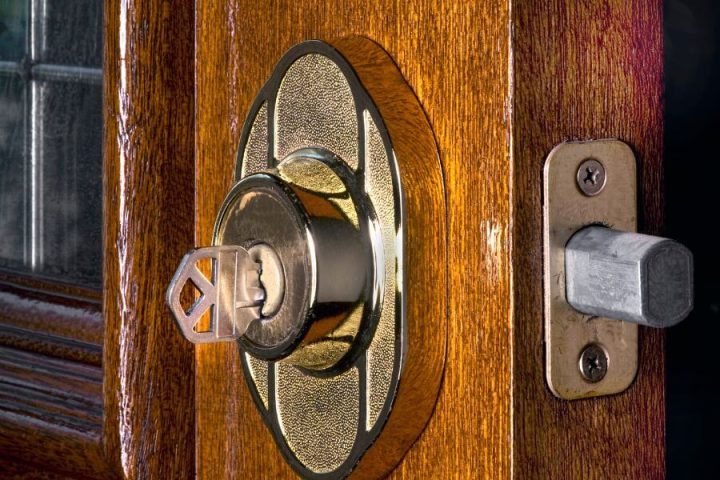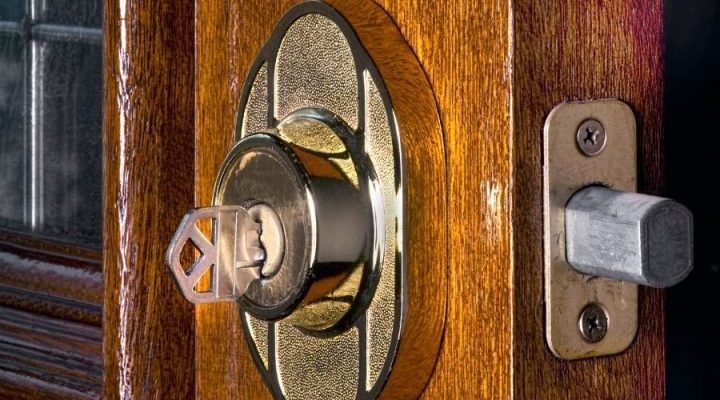
Picture a door like a stubborn old book that’s been left out in the rain—edges curled, pages sticking together. A warped wood door doesn’t just look off; it throws the whole system out of sync. And when you add a deadbolt into the mix—a lock that’s supposed to slide smoothly into a tiny, metal-lined hole—suddenly, even a little warp can mean a lot of trouble. Let’s break down why your deadbolt is getting stuck and what’s really going on behind the scenes.
How Warped Wood Affects Deadbolt Locks
Wood doors are pretty amazing when you think about it. They handle daily slamming, harsh weather, and heavy use. But here’s the thing: wood is always changing. Humidity, temperature swings, and even sunlight can all make your door expand, shrink, or twist. When that happens, the door may no longer line up with the frame like it did when it was new.
Now, add a deadbolt to the story. A deadbolt is designed to fit snugly into its strike plate. It expects precision—the bolt and the hole must match up, or the bolt won’t slide in fully. When your door warps, the bolt hole might shift just a tiny bit out of place. Suddenly, you need a lot of force to lock or unlock the deadbolt, because the hardware is no longer *in sync*.
Honestly, even a small bend or twist in the wood can throw the whole locking process out of whack. Over time, forcing the deadbolt can cause more stress on the lock and, in some cases, damage the door or the locking mechanism itself.
Why Does Wood Warp In The First Place?
You might be wondering, “Why do wood doors warp at all?” Well, wood is a natural, breathing material. It absorbs and releases moisture from the air, much like a sponge does. When your house gets humid—think summer thunderstorms or muggy afternoons—the wood in your door swells up. When things dry out again, the wood shrinks back down, but not always perfectly.
This constant swelling and shrinking can lead to warping. Sometimes you’ll notice your door sticking or dragging at the bottom, or gaps appearing at the top. Other times, the change is so subtle that you only notice because your deadbolt starts acting stubborn.
Doors installed without proper sealing or with weak weatherstripping are especially at risk. South-facing doors or those exposed to heavy sun and rain can warp faster than interior doors. And if you’re in a region that gets all four seasons, your door might be playing catch-up with the climate all year round.
What Happens Inside The Lock Mechanism?
Let me explain what’s happening inside your deadbolt when it’s hard to turn. When you twist your key or thumbturn, you’re moving a steel bolt through a very specific path—straight from the lock body into a hole (strike plate) in your door frame. This system is designed for smooth, straight motion.
If the door or frame warps, even a millimeter can throw off the *alignment*. Now, the bolt is running smack into the edge of the strike plate, or it can’t reach the hole at all. That’s when you feel the resistance. Sometimes, you might hear a grinding sound or feel a bump as the bolt jumps over the edge of a misaligned plate. In the worst cases, you might not be able to lock or unlock your door at all.
Forcing the deadbolt isn’t just frustrating—it can wear down the lock’s internal parts. Over time, you could chip the bolt itself or bend parts of the locking mechanism. That’s why a smooth-turning deadbolt isn’t just a convenience; it’s a sign that your door, frame, and lock are still playing nice together.
Why This Problem Gets Worse Over Time
Here’s where things can get really annoying: a slightly sticky deadbolt doesn’t always stay “slightly” annoying. If you keep forcing the lock, you can create a feedback loop that just makes the problem worse. When you put too much pressure on the lock, you risk bending or breaking internal parts. And if the door warps further, the misalignment grows, making the deadbolt even harder to operate.
You might also start seeing other little issues, like chipped paint around the strike plate or splinters where the deadbolt scrapes the wood. Sometimes, the latch on your door handle will stop lining up too, leaving you with both a stubborn deadbolt and a sticky handle.
The longer you leave the problem, the greater the risk that your lock will stop working entirely. And honestly, there’s nothing worse than getting locked out because your deadbolt finally gave up the ghost in bad weather.
How To Troubleshoot A Hard-To-Turn Deadbolt
If you’re struggling with a deadbolt that just won’t budge, there are a few steps you can try before calling in a pro. Start by checking the *alignment* of the door and strike plate. Open the door and try turning the deadbolt with the door open. If it turns easily, your lock isn’t the problem—it’s the way the bolt meets the frame.
- Check the strike plate: If it’s out of position, loosen the screws and shift it slightly until the deadbolt slides smoothly.
- Lubricate the lock: Use a graphite-based lubricant (never oil, which attracts dust) to keep the internal parts moving freely.
- Tighten hinge screws: Sometimes, loose hinges can cause the door to sag and throw off alignment. Tighten or replace screws as needed.
- Inspect weatherstripping: Bulky or damaged weatherstripping can push the door out of place, making the deadbolt hard to use.
If none of these quick fixes work, your door may be too warped for a simple adjustment. At that point, it’s time to think about repair or replacement.
When To Call A Locksmith Or Carpenter
There’s no shame in calling for help when your deadbolt just won’t cooperate. If you’ve tried all the troubleshooting steps and the lock is still hard to turn, you might need expert hands to get everything back in sync.
A locksmith can check whether the lock itself is damaged and re-key or replace it if needed. They can also adjust the position of the strike plate or even recommend a different type of lock if your door is badly warped. Sometimes, switching to a smart lock or a lock with more forgiving tolerances can help, but only if the door itself isn’t too far gone.
If the problem is with the door—not the lock—a carpenter can plane the edge of the door so it fits better, or replace the door entirely if warping is severe. In some cases, replacing old screws with longer ones can pull the door tighter to the frame, improving alignment. Don’t wait until the lock fails completely; early intervention usually saves time (and money).
Preventing Deadbolt Problems On Wood Doors
The best way to avoid deadbolt headaches is to keep your wood doors in good condition. Start by making sure your door is properly sealed against the elements. Regularly check paint or finish for chips—bare wood absorbs moisture fast, which speeds up warping.
- Seal all sides: Including the top and bottom edges of the door—not just the faces—so moisture can’t sneak in.
- Install good weatherstripping: This keeps drafts (and humidity) out and helps maintain a stable door shape.
- Avoid slamming: Slamming a doors damages hinges and can throw off alignment, making deadbolt issues worse.
- Check alignment seasonally: Especially after a hot, humid summer or a wet winter, make sure your deadbolt still turns easily and that the door closes tightly.
Taking care of your wood door doesn’t just protect your deadbolt—it keeps your home secure and your daily routine smooth.
Are There Better Alternatives To Wood Doors?
If you’re tired of fighting with a sticky deadbolt and warped wood, you might be considering alternatives. Fiberglass and steel doors don’t have the same moisture problems as wood and tend to stay in sync with their frames over time. They’re also more resistant to weather changes, which means your deadbolt is less likely to act up.
However, wood doors have classic appeal and are a favorite for many homeowners. If you love the look of wood but hate the maintenance, some advanced composite doors combine a wood veneer with a more stable core—that way, you get the style without as much risk of warping.
Whatever you choose, just make sure your lock and door are compatible from the start. Some universal deadbolts are designed with flexible installation in mind, making them easier to pair with doors that might move a little over time.
Closing Thoughts: Keeping Your Deadbolt (And You) In Sync
A hard-to-turn deadbolt on a warped wood door is more than just an annoyance—it’s a signal that your door, your lock, and maybe even your home need a little extra attention. Staying ahead of the issue with regular checks, small repairs, and a bit of troubleshooting can keep things running smoothly. Whether you stick with wood or pick something new, remember: when your deadbolt and door are working together, everything (and everyone) feels a bit more secure.
